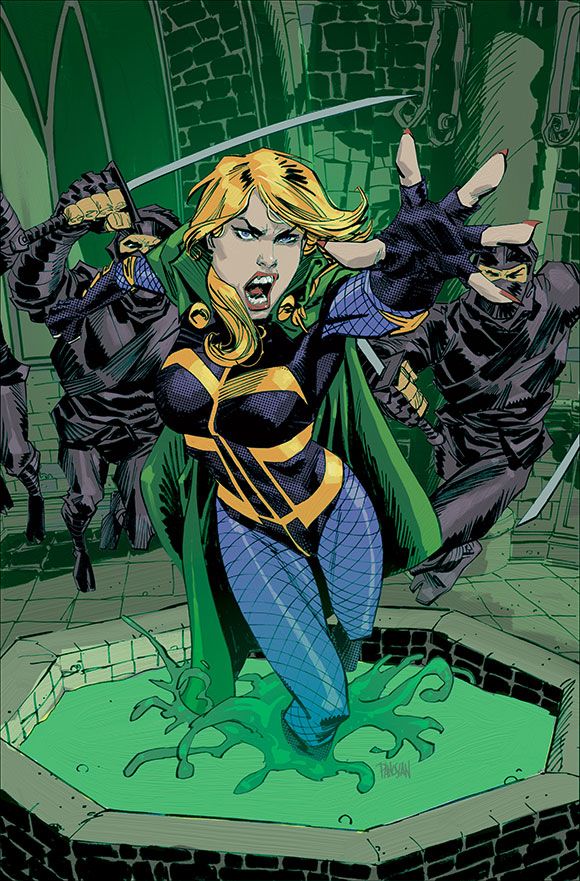Taking two long strides into the future, writer Christy Marx and a veritable army of artists -- Robson Rocha, Oclair Albert, Julio Ferreira and Scott McDaniel -- join in on the "Futures End" event by peering into Black Canary's alternate future. Although the title carries the group's name, "Birds of Prey: Futures End" #1 doesn't actually show very many of Dinah's teammates, offering instead an unmemorable one-off mission that features faceless assassins and asks more questions than it answers. Where the issue presents some solid artwork with detailed figures and gorgeous scenery, it fails to engage the reader by burying the lede.
Marx and her art team have a hell of a job to do in twenty two pages: covering five years of time is no easy feat for an arc, nevermind a single issue, but -- to her credit -- Marx has an interesting premise on her hands. However, this promising premise quickly gets buried underneath a landslide of questions whose answers go assumed as well as a few plot devices that take a reader out of the story. Only two members of the New 52's Birds of Prey team show face, namely Black Canary and Batgirl, but even Batgirl's appearance is reduced to a cameo with a "Read Batgirl's issue!" note attached to it. Most of Black Canary's missing years go unmentioned, including key scenes such as her death, subsequent resurrection in the Lazarus pit, and rebranding of the League -- all of which we're left to gather on our own from the issue's cover. The story doesn't have much to do with the events of "Futures End," focusing instead on a corrupt member of Gotham's elite; though the topic -- human trafficking -- is certainly relevant and important, it feels like a distraction from the other events going down in the DC universe at best and an irreverent plot device at worst for its brevity. Though the book opens through the perspective of a trafficked girl -- Xi -- who quickly becomes a member of the Red League, this POV gets dropped midway through in favor of Black Canary; where the story continues Xi's fight against trafficking, it loses all its emotional impact but shunting her to the background for the final fight and conclusion, allowing her only two lines in a sequence that held far more relevance for her than Black Canary. "Birds of Prey: Futures End" #1 may have been founded on a sound idea, but its execution is sloppy and tackles all the wrong issues.
Although the story itself needs some fine-tuning, the artwork gets done what it needs to in a practical but pleasant way. With four people -- Robson Rocha, Oclair Albert, Julio Ferreira and Scott McDaniel -- on task, the art is surprisingly cohesive with notable choreography and finely detailed figure work. The scenery -- like Paul Howe III's estate, in particular -- is drop dead gorgeous in its lifelike quality; the team shows a lot of attention to the minute features of Black Canary's world. Christopher Sotomayor gives this book a subtly muted tone with colors dulled just enough that can't be called vivid but are certainly not drab -- that is, Sotomayor's touch gives us an atmosphere that's a little rough around the edges, but not one entirely without hope for a brighter world. As such, their work fits neatly into DC's house style, which gives credence to its ornate if standard look.
With a promising core idea, "Birds of Prey: Futures End" #1 fails to deliver its promise with poor story execution. Though the book is lovely to look at, it has flimsy substance that buckles under the pressure of a closer look.

